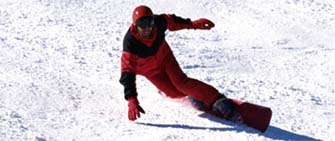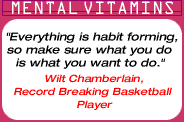
Scoring with Skillful Self-challenges
Decide with your teacher which of these activities to complete:
- Remember learning to ride
a bike? Once you got the balance part down, away you went! Skateboarding,
inline skating, snowboarding and skiing also teach balance. You won't
be using these activities as part of your gymnastics program but they
do illustrate why balance is important.
Do the following balance drill: stand on one foot, lean in different directions, jump and land on the same foot, jump and land on the other foot, jump and turn. Can you choose balances that are for one body part? For two body parts? Three? Now combine and move from one to two to three, or mix them up. While you are balanced, can you make your body very still? If your leg is extended, can you point your toes? Strongly flex your foot for a kind of martial arts look!
Can you create a sequence and repeat it at least five times? When creating a sequence, which is pulling together a number of moves, you are working on connecting these 'moves' smoothly. In this activity you would be moving from one balanced move to another in a controlled manners. How might you improve it? Would it be good for someone in your home to observe you, noting the improvements and progress you make as you continue to work on your sequence?
- Move around in a series
of hops, skips, and jumps. How else can you move around in a space?
Now can you combine one and two? In other words, try to move from a
balanced shape using a different type of movement each time. Try moving
at different levels such as up high, down low, sliding on the floor,
or rolling on the floor, to get to the next balance point. This sequence
will require more strength as you will be moving into balanced position
from movement. Hang onto your center of gravity.
- This activity works in two
steps.
Step One: Take a blank piece of paper and at least three different coloured markers on the paper. Draw a zigzag pattern for five seconds with your eyes closed. Open your eyes and choose a different coloured marker. Starting where the zigzag left off, draw a curved line pattern with your eyes closed. Now change colours again and draw straight lines while your eyes are closed. As you can see, different colours connect the patterns. You now have a "map."
Step Two: Think of a variety of ways of moving including low, medium, high, fast and slow. Your moves could include hopping, leaping, jumping, crawling, skipping, etc. Pick three. Now use your "map" to move around the room. Follow the patterns you created and use a type of movement. You might hop in a zigzag path, crawl in a curved path, or skip in a straight pathway. For more fun and challenge, share, trade and combine your map with others. Now try to add a balance on one, two or three body parts everywhere that you change colours.

activities | health benefits | cooperation | do it daily for life
